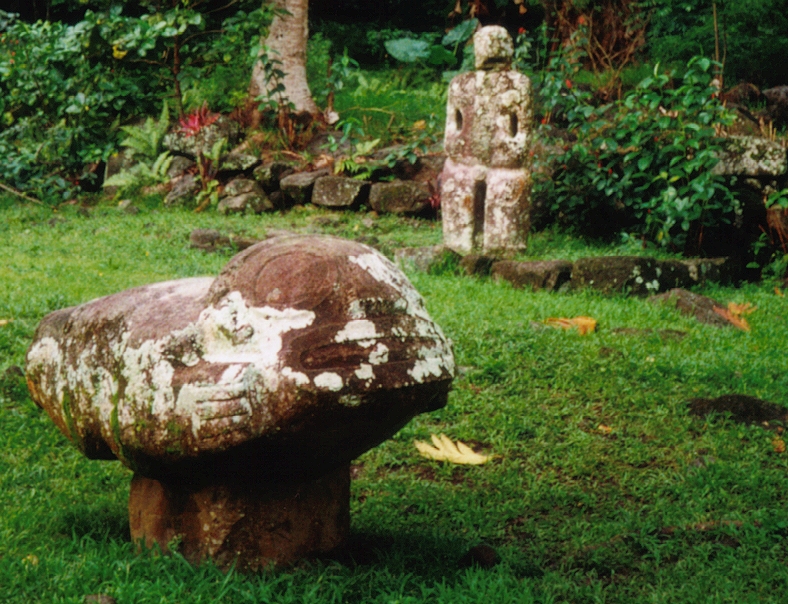|
Tau-Titi
In the mythology of Mangaia, Tau-Titi is a son of Miru. A nocturnal dance dedicated to and named after him was practised, occasionally with the Tapairu In the mythology of Mangaia in the Cook Islands, the Tapairu are elves or fairies, who are named after the four daughters of Miru Miru may refer to: * Miru (goddess), a death goddess in Polynesian mythology * Miru, Iran, a village in Bandar Abbas ..., Tau-Titi's sisters. As soon as the dawn arrives, the Tapairu returned to their home in Avaiki. References *R.D. Craig, ''Dictionary of Polynesian Mythology'' (Greenwood Press: New York, 1989), 33–34; *W.W. Gill, ''Myths and Songs of the South Pacific'' (H.S. King: London, 1876), 256–7. {{CookIslands-stub Mangaia mythology ... [...More Info...] [...Related Items...] OR: [Wikipedia] [Google] [Baidu] |
Miru (goddess)
Miru is a goddess in the Polynesian mythology of the Cook Islands who lives in Avaiki beneath Mangaia. She feeds the souls of dead people a bowl of live centipedes, causing them to writhe in agony, then encourages them to seek relief by diving into a lake, where they drown and can be cooked and eaten at her leisure. The Tapairu In the mythology of Mangaia Mangaia (traditionally known as A'ua'u Enua, which means ''terraced'') is the most southerly of the Cook Islands and the second largest, after Rarotonga. It is a roughly circular island, with an area of , from Raroton ... are her daughters, and Tau-Titi is her son. Miru also features in Maori mythology (New Zealand) as the Goddess of Death. References Death goddesses Mangaia mythology Māori goddesses {{CookIslands-stub ... [...More Info...] [...Related Items...] OR: [Wikipedia] [Google] [Baidu] |
Tapairu
In the mythology of Mangaia in the Cook Islands, the Tapairu are elves or fairies, who are named after the four daughters of Miru Miru may refer to: * Miru (goddess), a death goddess in Polynesian mythology * Miru, Iran, a village in Bandar Abbas County, Hormozgan Province, Iran * Miru River, a river of Romania *Miru, a character from the Pac-Man originally called ''Pu ..., the deformed goddess of the underworld. They were said to have been present when mortals danced in honor of their brother, Tau-Titi. They were also associated with the god Tane. References *R.D. Craig, ''Dictionary of Polynesian Mythology'' (Greenwood Press: New York, 1989), 33–34; *W.W. Gill, ''Myths and Songs of the South Pacific'' (H.S. King: London, 1876), 256–7. {{CookIslands-stub Mangaia mythology Polynesian legendary creatures ... [...More Info...] [...Related Items...] OR: [Wikipedia] [Google] [Baidu] |
Polynesian Mythology
The Polynesian narrative or Polynesian mythology encompasses the oral traditions of the people of Polynesia (a grouping of Central and South Pacific Ocean island archipelagos in the Polynesian Triangle) together with those of the scattered cultures known as the Polynesian outliers. Polynesians speak languages that descend from a language reconstructed as Proto-Polynesian - probably spoken in the Tonga - Samoa area around 1000 BC. Description Prior to the 15th century AD, Polynesian peoples fanned out to the east, to the Cook Islands, and from there to other groups such as Tahiti and the Marquesas. Their descendants later discovered the islands from Tahiti to Rapa Nui, and later Hawai‘i and New Zealand. The latest research puts the settlement of New Zealand at about 1300 AD. The various Polynesian languages are all part of the Austronesian language family. Many are close enough in terms of vocabulary and grammar to permit communication between some other language speakers. ... [...More Info...] [...Related Items...] OR: [Wikipedia] [Google] [Baidu] |
Mangaia
Mangaia (traditionally known as A'ua'u Enua, which means ''terraced'') is the most southerly of the Cook Islands and the second largest, after Rarotonga. It is a roughly circular island, with an area of , from Rarotonga. Originally heavily populated, Mangaia's population has dropped by 75% in the last 50 years. Geography Originally known as ''A'ua'u'' or ''A'ua'u Enua'' ("terraced"), the island was named Mangaia (or ''Mangaianui-Neneva'', "Mangaia monstrously-great") by Tamaeu, who came to the island from Aitutaki in 1775. Geologists estimate the island is at least 18 million years old. It rises 4750 m (15,600 ft) above the ocean floor and has a land area of 51.8 km2. Surrounded by a fringing coral reef, like many of the southern Cook Islands, it is surrounded by a high ring of cliffs of fossil coral 60 m (200 ft) high, known as the makatea. The inner rim of the ''makatea'' forms a steep cliff, surrounding swamps and a central volcanic plateau. The interi ... [...More Info...] [...Related Items...] OR: [Wikipedia] [Google] [Baidu] |
Avaiki
Avaiki is one of the many names by which the peoples of Polynesia refer to their ancestral and spiritual homelands. Samoa, Hawaii, Cook Islands By no means certain, but certainly possible, is an origin in the large islands of Samoa, namely Savaii and Upolu. Variants include, in order of migration, Havaii, the old name for Raiatea in French Polynesia; the far better known Hawaii in the United States, Avaiki in the Cook Islands and Niue and Hawaiki in New Zealand. There are endless local variants. In the Cook Islands, for example, on the capital island of Rarotonga, northern facing volcanic rocks, tumbling onto the shore millennia ago and still set in place, are well known as the ancient departure point for souls bound for Avaiki - the afterworld or heaven. In fact each island, ''vaka'' or ''ngati'' (family line) has its own Avaiki or interpretation of it. For instance it would be somewhere in the Manu'a islands group (American Samoa) for the Ngati Karika (Te au o Tonga tribe ... [...More Info...] [...Related Items...] OR: [Wikipedia] [Google] [Baidu] |

